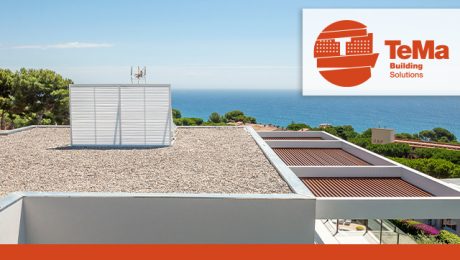Ballasted roofs: why gravel, and how to protect their waterproofing
Something of an innovation in the Italian building scene, while also being a useful device for protecting the roof, the ballasted flat roof is a solution that can become a distinctive feature of either a residential or commercial building.
Unlike the traditional system involving the use of concrete, using gravel is an option that brings a number of attractive advantages:
- it protects the roof against wind and UV rays
- it protects the roof against mechanical damage
- it is low maintenance
- it provides thermal comfort in summer as it shades the roof
- it makes the whole roof system practically fireproof
- it is long lasting.
In building, the choice of a ballasted roof is often prompted by aesthetic reasons for a holiday home or a hotel by the sea, or in an area with high sunshine hours… while it also caters to the need for optimal insulation and low maintenance.
The TeMa Building Solutions answer for protecting ballasted roofs
When gravel is laid, the load can tear the waterproofing layer on the roof underneath, and this comes with the risk of leaks, with all the ensuing stain, mould and structural damage issues.
So it is important to address the need for rainwater drainage and mechanical protection of the waterproofing.
TeMa Building Solutions has come up with a product that serves multiple functions: the product in question is T-Kone G Drain, the studded membrane (which serves to protect the waterproofing) featuring a geotextile (addressing the need for filtration and separation).
Placed between the gravel layer and waterproofing, T-Kone G-Drain is thin, strong and ideal for an effective build-up without the bulk.
- Published in Ballasted roofs, BUILDING, Studded membranes and accessories


